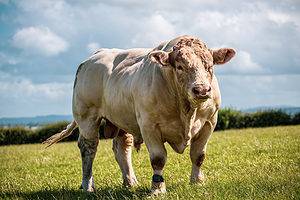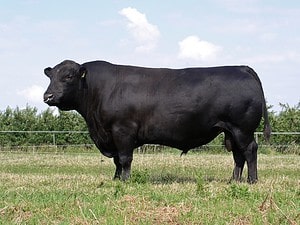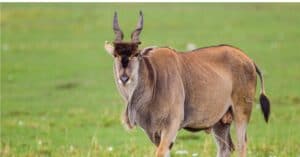Cows come in a variety of sizes. For example, a miniature Zebu cow named Blaze stands just 2 feet 3.19 inches tall from hoof to withers, while Blossom, a dairy cow, stood a whopping 6 feet, 2.8 inches! And while cows may normally weigh anywhere from 1,000-2,500 pounds, steers named “cowboy” in California and “knickers” in Australia each tip the scales at about 3,000 pounds each–which is as much as a compact car! The size of a cow can be influenced by various factors, including genetics, diet, and environment. There are over 920 cow breeds in the world today, but which of them routinely produce the largest cows in the world?
What Breeds Produce the Biggest Cows in the World?
Throughout history cattle breeders have had an interest in using a selective breeding process to turn out larger cows that can produce more milk and beef than standard breeds. As part of the breeding process, they also try to create animals that are gentle and horn-free, as such large beasts can be dangerous. Here are some of the breeds that regularly turn out some of the biggest cows in the world:
Chianina
The Chianina is the largest of all breeds of cattle. Chianina cattle can reach 6 ft. 7 in. in height and can weigh up to 3,500 pounds. Calves can weigh a whopping 110 pounds at birth. They are white with a black switch (the term for the long hairs at the end of a cow’s tail). Originating in Italy, the Chianina is not only the largest breed in the world but one of the oldest as well. They were prized by the ancient Romans for their white coats and used in special ceremonies and processions.
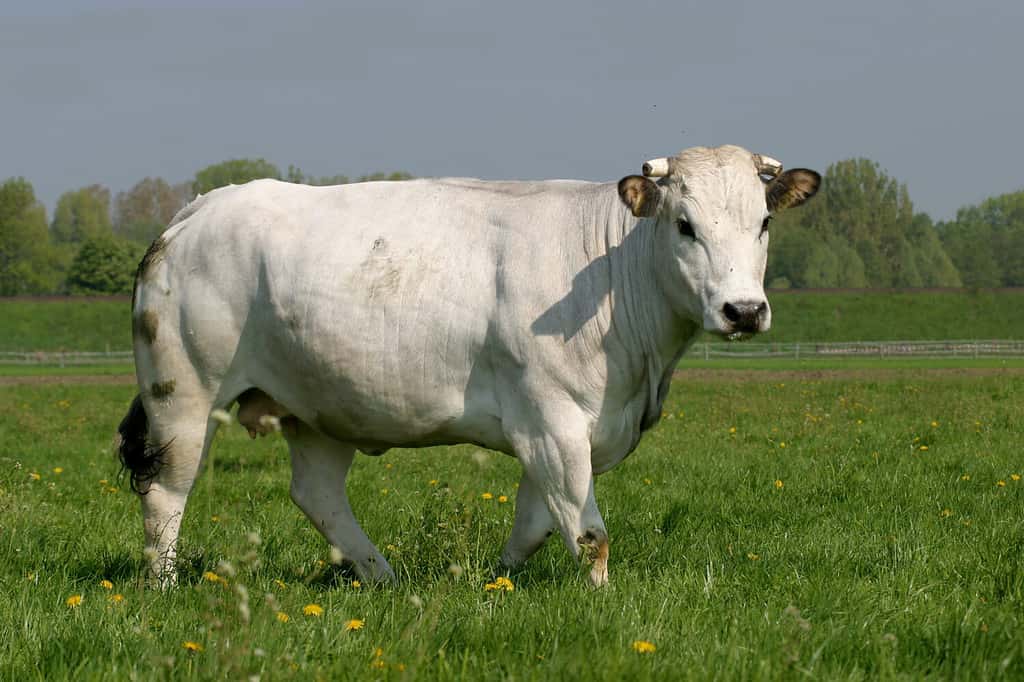
Chianina cows are the tallest and heaviest breed of cattle.
©R. Maximiliane/Shutterstock.com
South Devon
South Devon cows are native to the United Kingdom and are the largest breed from that country. They average 3,500 pounds but can grow as heavy as 4,400 pounds and stand about 5 feet tall. They’re raised for their high meat and milk production, but their “gentile giant” disposition is one of their greatest assets. Mother cows have a strong material instinct and care attentively for their young, so that the mortality rate of calves is lower than with other breeds.

South Devon cattle are the largest breed originating in the United Kingdom.
©Dave Atkins/Shutterstock.com
Maine-Anjou
This breed was developed in France to produce milk and beef, which it’s very good at, as it fattens up easily. Maine-Anjou cows can grow to about 3,100 pounds and 5.6 feet tall. The cows have a strong maternal instinct and raise healthy calves with their highly nutritious milk. Bulls are reputed to be difficult and aggressive at times, though.
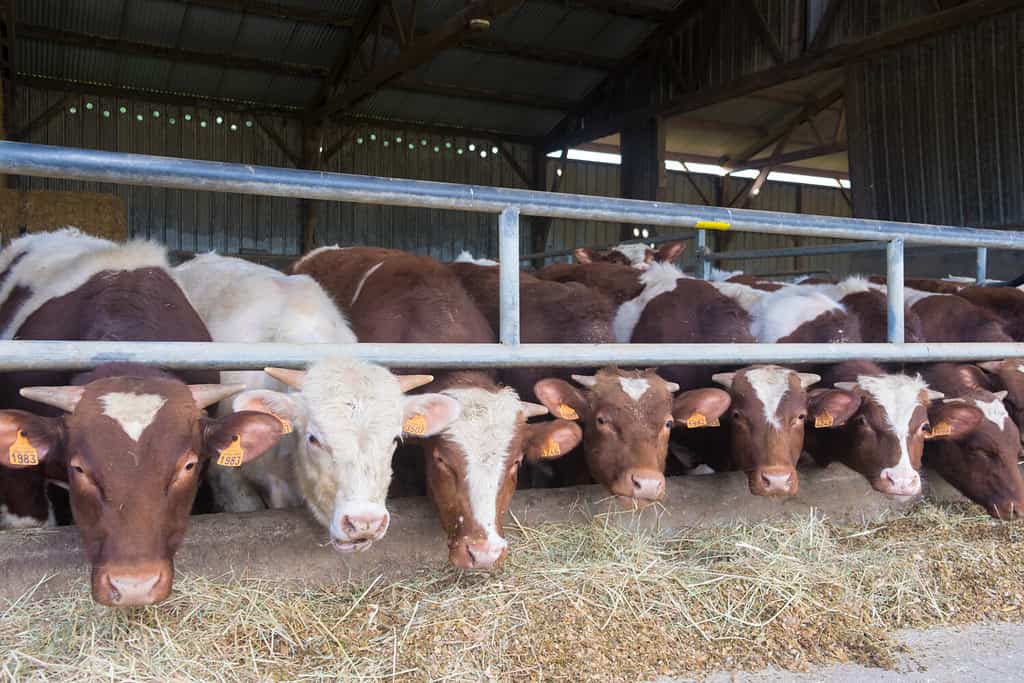
Maine-Anjou cattle from France fatten up easily and can grow to 3,100 pounds.
©eric laudonien/Shutterstock.com
Glan Cattle
Glan cattle are a yellowish-furred breed that has been raised for hundreds of years in Germany, particularly in the Rhineland-Palatinate region. They can weigh up to 2,650 pounds and can grow as tall as 4.75 feet. They almost went extinct but are starting to make a comeback, primarily as beef cattle. There are an estimated 2,000 of them in the world today.
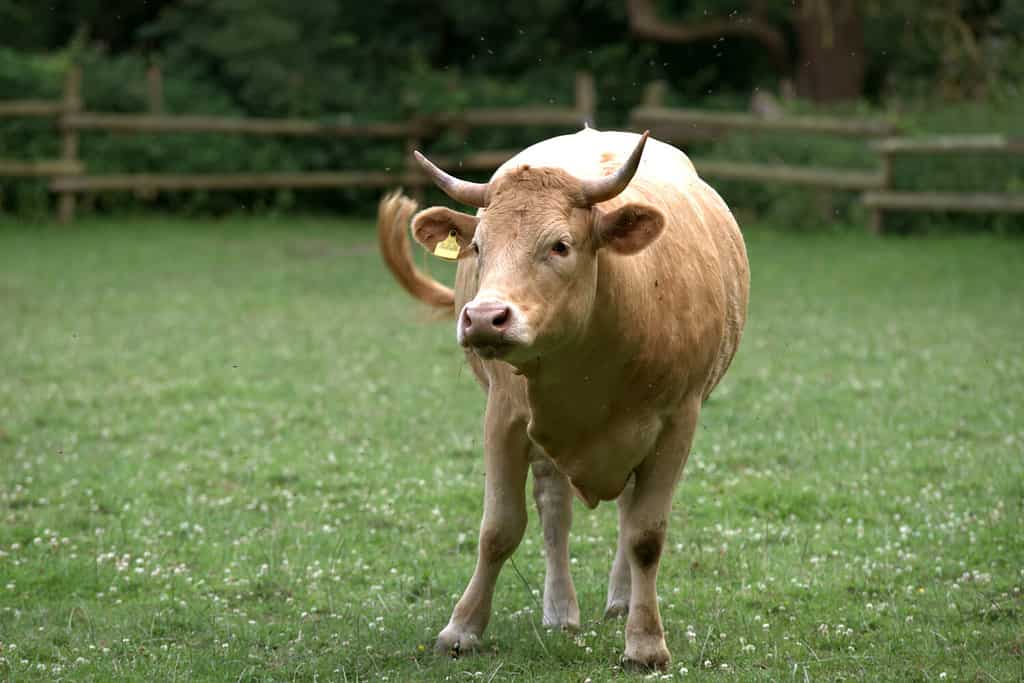
Glan cattle are a traditional cattle breed particularly found in the Rhineland-Palatinate region of Germany.
©Erhard Ernst/Shutterstock.com
German Angus
As the name suggests, this breed originated in Germany. It was developed in the 1950s for beef production, and some 10,000 of the species exist today. They come in solid black, brown, or red and never have horns. German Angus grows up to 4.75 feet tall and weigh up to 2,650 pounds. They have an easier time calving and have a lower calf mortality rate than their predecessor breeds. Their temperament is tame and placid.
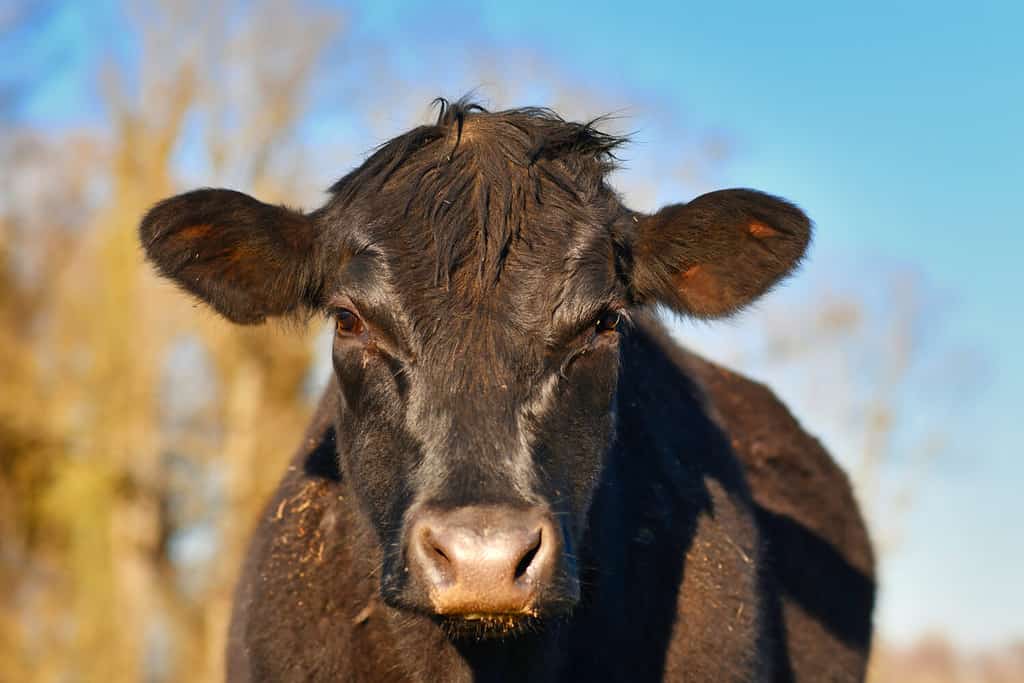
German angus cows come in solid black, brown, or red and never have horns.
©Firn/Shutterstock.com
Montbéliarde
The Montbéliarde is a short-horned breed that has been developed in France since the late 19th century. They are a pied (having two or more colors) breed that comes in splotched red and yellow. They are especially valued for their milk, as its chemical composition is well-suited to cheesemaking. At maturity, they can weigh up to 2,600 pounds and stand about 4.75 feet tall. There are nearly 400,000 Montbéliarde in France, and they have become popular around the world for crossbreeding with Holsteins to improve the fertility and lifespan of that breed.
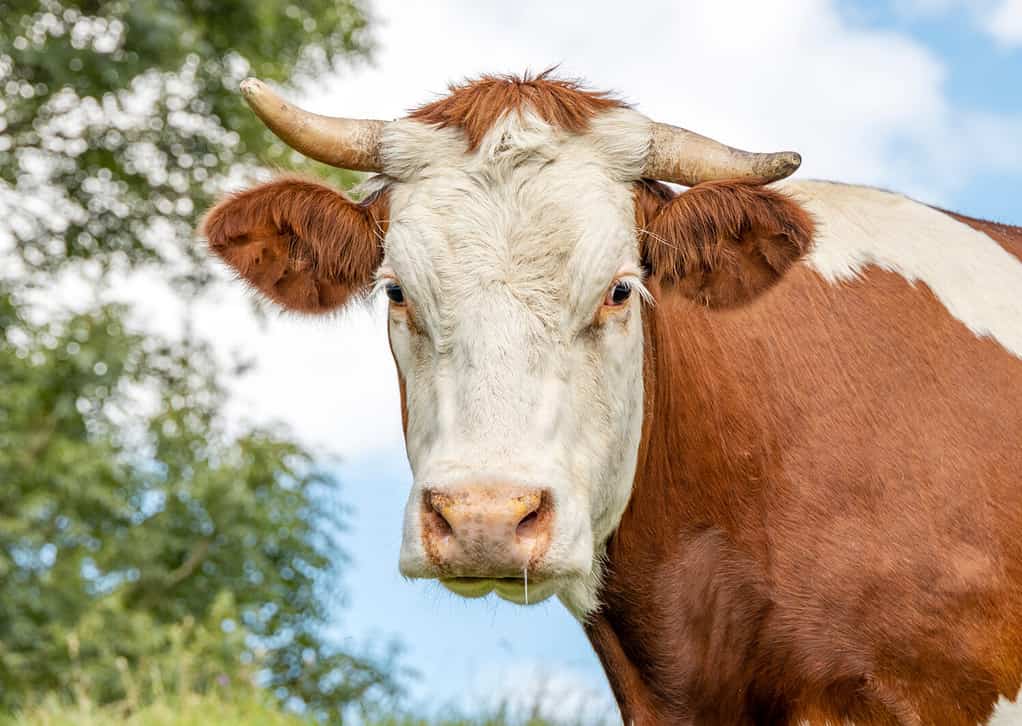
The Montbéliarde is short-horned breed that has been developed in France since the late 19th century.
©Clara Bastian/Shutterstock.com
Parthenais
The parthenaise is native to Western France. It was originally bred for milk, meat, and as a draught animal, but today it is raised mainly for beef. The fur of parthenaise cattle ranges from light to dark wheaten and they have grey rings around their muzzles and eyes. One of the interesting features of this breed is that their horns grow in a lyre shape. Mature bulls stand 4.75 feet tall and weigh up to 2,600 pounds.
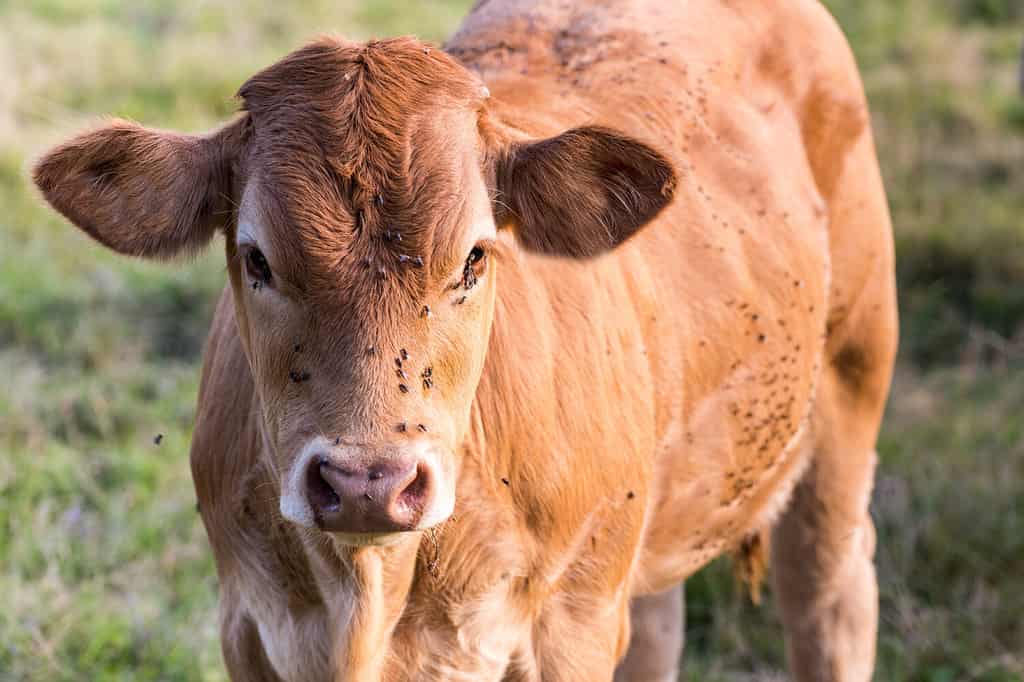
The fur of parthenaise cattle ranges from light to dark wheaten.
©Pitamaha/Shutterstock.com
Limousin
France is home to some of the largest cattle breeds in the world. One of these is the limousin, an ancient breed that looks suspiciously similar to 20,000-year-old European cave paintings of cattle. Today the limousin is the second-most popular breed in France after the charolais, and is raised in about 80 countries around the world. An adult male can weigh up to 2,870 pounds and 4.75 feet at the shoulder.
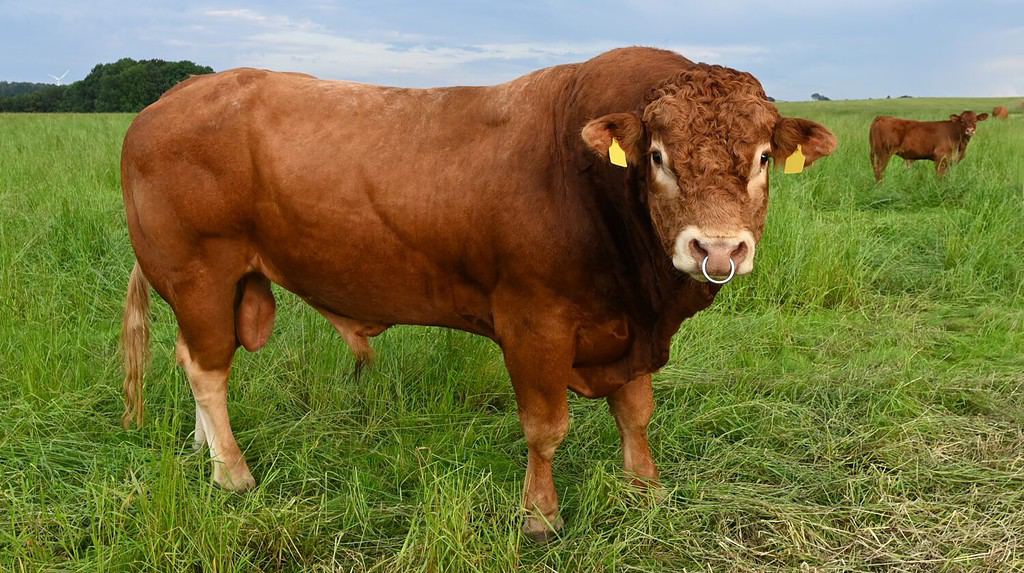
The limousin is a breed of high muscle beef cattle that originated in France.
©perfect-picture-hunter/Shutterstock.com
Bazadaise
Another French cattle breed, the Bazadaise, is grey and has in-curved or down-curved horns that have dark tips. Originally beasts of burden, they pulled heavy loads. But in more recent times, they are beef cattle. The meat has marbling, tenderness, and flavor. They can be as heavy as 2,200 pounds and 4.75 feet tall at the shoulder.
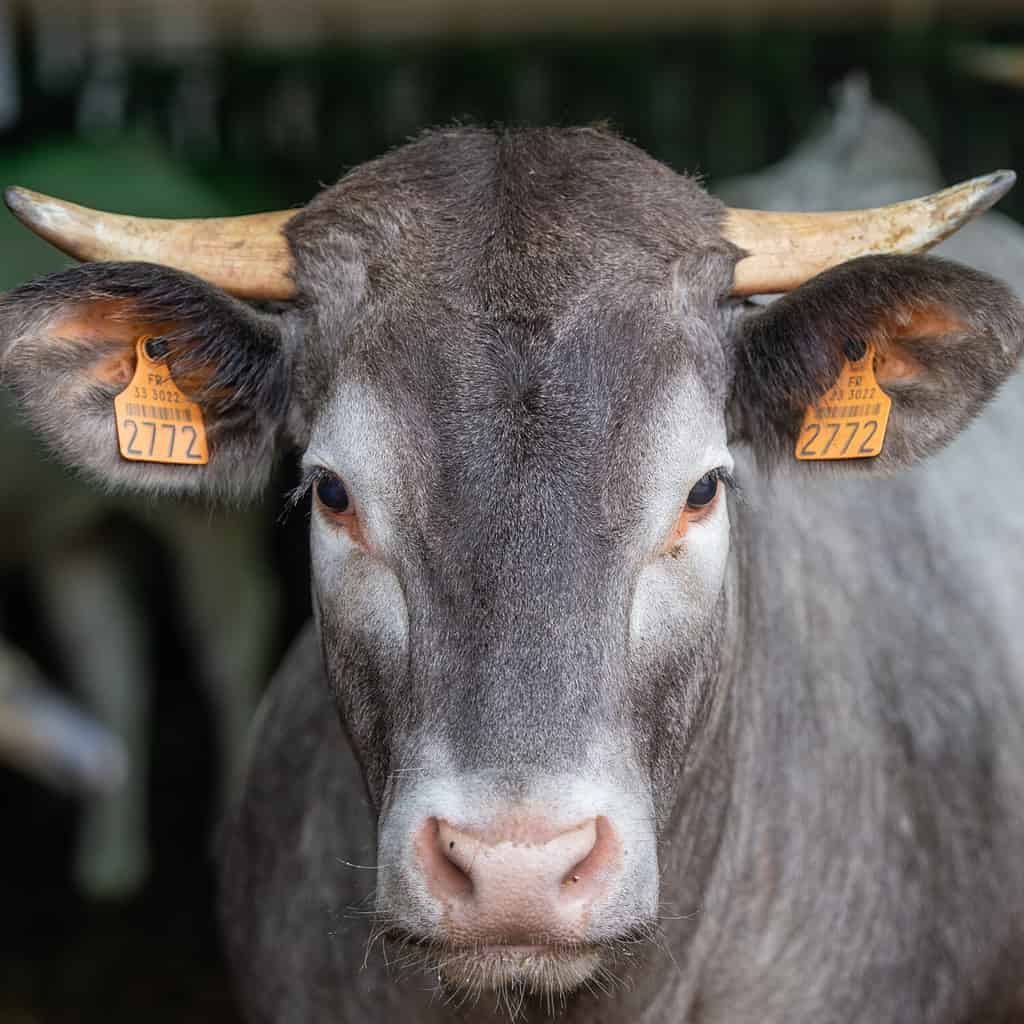
Bazadaise beef is prized for its marbling, tenderness and flavor.
©FreeProd33/Shutterstock.com
Charolais
The charolais is a French beef cow crossed with other breeds, such as Angus or Hereford. It’s the most common beef breed in the country, with over four million heads raised there. In other countries, they number about 730,000 in total, with the largest populations in Mexico and the Czech Republic. They are white to cream-colored and are quite heavy, weighing up to 3,600 pounds. They can be almost 5 feet tall.
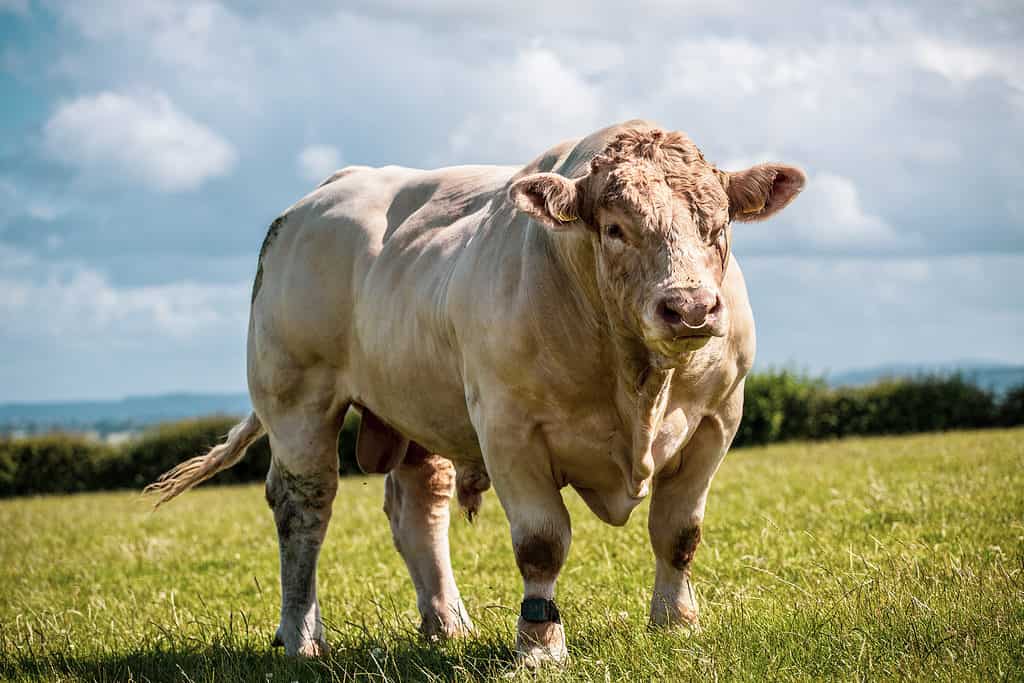
Charolais cattle are large and muscular.
©Lazarov/Shutterstock.com
Advantages and Disadvantages of Large Breeds
There are some real advantages to breeding large cows. They can yield large amounts of milk and beef. Their calves are born larger and are on average larger at weaning than smaller breeds. They have a lower mortality rate and, being heavier, bring a higher price at auction. Commercial industries raise large breeds, so their characteristics make them easier to handle. For example, many of them are bred not to have horns and to have a more docile disposition. On the downside, heavier cows consume more feed and need larger pastures and stables.
Small cattle or even miniature cattle of course take up less space, physically, but they are also use resources more efficiently. They convert forage to weight effectively and produce a high ratio of meat compared to their weight when living. They’re good choices for someone who wants to raise a small number of cows to provide for the needs of a family, such as people in developing countries where land is scarce, or back-to-nature homesteaders in developed countries. Smaller cows do have more difficulty giving birth, especially to male calves that tend to be larger at birth than females.
So, big or little? Which cow’s right for your backyard? Either way, keep Guinness World Records on speed dial!
Summary of the Largest Cows in the World
| Rank | Cow | Size in Height & Weight |
|---|---|---|
| 1 | Chianina | up to 6 ft. 7 in. tall; up to 3,500 lbs |
| 2 | South Devon | 5 ft tall; average 3,500 |
| 3 | Maine-Anjou | 5.6 ft tall; about 3,100 lbs |
| 4 | Glan Cattle | 4.75 ft tall; up to 2,650 lbs |
| 5 | German Angus | 4.75 ft tall; up to 2,650 lbs |
| 6 | Montbéliarde | 4.75 ft tall; up to 2,600 lbs |
| 7 | Parthenais | 4.75 ft tall; up to 2,600 lbs |
| 8 | Limousin | 4.75 ft tall; up to 2,870 lbs |
| 9 | Bazadaise | 4.75 ft tall; up to 2,200 lbs |
| 10 | Charolais | 5 ft tall; up to 3,600 lbs |
The photo featured at the top of this post is © Gatien GREGORI/Shutterstock.com
Sources
- Guinness World Records, Available here: https://www.guinnessworldrecords.com/search?term=cows&page=1&type=record&max=20&partial=_Results&
- Global News, Available here: https://globalnews.ca/news/4714170/california-biggest-cow-cowboy/
- Agronomag, Available here: https://agronomag.com/biggest-cows-world/
- (1970)
Thank you for reading! Have some feedback for us? Contact the AZ Animals editorial team.



